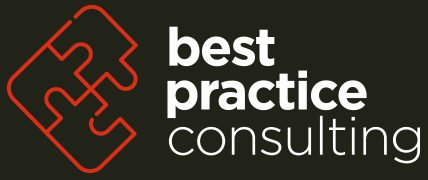There are business owners who continue to grow their business and always seem to go from strength to strength. Then there is everyone else who is well intentioned but struggle with the time to manage their business, let alone set goals and then work on achieving them.
It is a proven fact that most small to medium sized organisations do not have a written business plan. No documented business plan means that objectives and strategies are not captured, resulting in a business that lacks direction. In addition, an organisation without a business plan will often lack the confidence to solve their business issues. When business issues remain unresolved they can adversely affect cash flow, revenue and profitability.
The truth is that this lack of formal business planning is one of the major causes of business failure.
A business plan sets out what a business proposes to do and how it proposes to do it. Here are few practical steps to help create a powerful business plan to drive the success of your organisation.
Step 1 – Look at the strength and weaknesses of your competitors. By researching your competitors you are better equipped to understand why clients are attracted to your competitors (i.e. their strengths) and what gaps or niches exist in the market place (i.e. their weaknesses).
Step 2 – Outline the strengths and areas for improvement in your business.
Step 3 – Define the vision for your organisation.
Step 4 – Define your goals. These are areas you want to improve. Typically objectives tend to be financial, operational, business development, staff and IT related. Objectives should be quantifiable by an absolute amount, a percentage and have a specific timeframe for achievement.
Step 5 – Create the strategies which will deliver performance improvements, i.e. how your business will get there.
Step 6 – Identify a timeframe and owner for the achievement of each strategy.
The process of creating a business plan is more important than the document itself.
The process of business planning is beneficial because it gives you:
- A chance to stop, reflect and learn from past mistakes or wins in your business.
- An opportunity to discuss and exchange ideas with members of the team.
- A forum to think critically about goals, e.g. revenue and profit, and this results in targets being set which motivates the team to improve.
High-achievers in the small-to-medium size business sector admit that the turning point in their business was when they prepared their business plan.
Once you have created a sound plan, it is then essential to implement the plan with the support of the right process and people resources. In addition, it is essential to identify intervals for the review of performance against all objectives e.g. monthly, quarterly, annually. This will give feedback as to whether your strategies are working and give you an opportunity to change strategies if need be.
A well thought out business plan is the key to the long-term success of any business. Whether you are just starting a business, buying one already established or perhaps in need of extra finance for expansion you will need a business plan.
We provide strategic and business planning facilitation to help set you up for success. If you want to talk further get in touch with us today.

